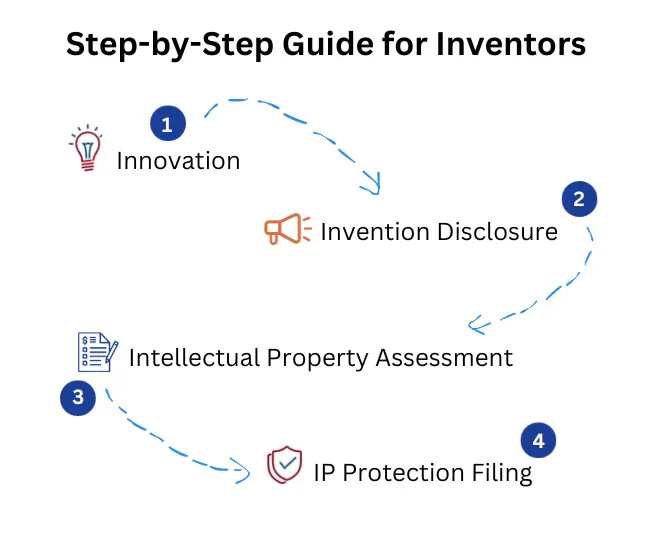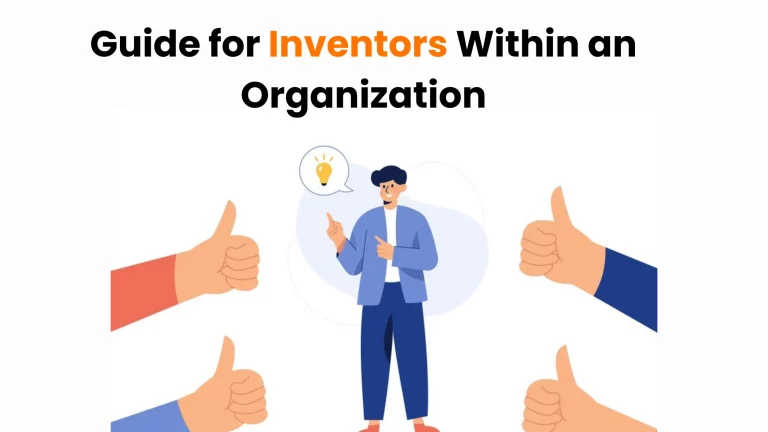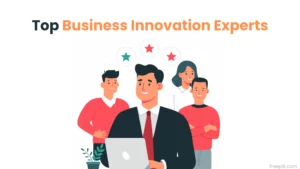Every business, small or large, is full of talent waiting to understand how to transform ideas into tangible innovations. But more often than not inventors wonder: Where does innovation begin, and what are the steps to legally protect intellectual property?
This guide is here to give you, the inventor, a clear path.
From conceiving an idea capable of becoming a patent-worthy innovation till filing a patent, and everything in between, here’s an easy four-step inventor’s guide to help you navigate the process.
Let’s dive in!
Step 1: Innovation
It all begins with a new discovery, an idea, an experiment, a novel solution, and even distinctive data. As an inventor, look for intrapreneurial opportunities within your organization to innovate and grow beyond your core roles.
It does not matter whether you work in the Sales department or the Product Development team, whether you’re an intern or a Product Owner, your curiosity and creativity are your biggest assets.
This participation, in fact, is the real innovation.
Leverage brainstorming tools, collaboration tools, and idea & innovation management solutions to:
- Firstly, come up with a lot of ideas. Only by engaging in regular and consistent idea generation process individually or with your favorite colleague, you can get to patent-worthy ideas.
Related Read: The Power of AI-Driven Inventor Assistant
- Brainstorm what sets your idea apart or what can set your ideas apart. Is it solving a significant problem? Is it a fresh approach? Make AI work in your favor here and refine your ideas.
- Collaborate with co-innovator and inventors. Use an idea and innovation management software to streamline the process.
Basically, every employee is an inventor who drives innovation.
Your idea could be the next big solution that leads to an improvement in business processes or a breakthrough product.
Once there’s an idea with a high potential, then begins its path to market and the time to take the next step.

Step 2: Invention Disclosure
As a proactive employee, you must come up with ideas that change business processes and strategies internally and the end product that customers consume. However, the invention disclosure step comes in for the ideas that have the potential of turning into a full-blown invention.
Your invention, a result of your skilled research, creativity, and intellect, could be novel, ingenious, and useful. It could be an unusual, unexpected, or non-obvious product that requires legal protection in the form of patents, copyrights, and trademarks.
As an inventor, you’d want to protect your intellectual property and the commercial value of your innovation by restricting its use by third parties.
An invention disclosure is your formal way of notifying your organization and documenting that your idea is worth protecting. It also acts as the foundation of your innovation’s legal journey.
Here’s a list of the prerequisites to find out the patentability of your invention before submitting the disclosure.
- Reduced to practice: Ensure your invention is not just a concept but has a complete construct.
- Limited Familiarity: Perform an informal and high-level search using tools like Google Patents or public databases to check for obvious similarities. This allows to gauge novelty without delving into exhaustive searches.
- Usability: Ensure it has a purpose and operability out there.
- Non-obvious: Ensure the invention, apart from being novel, is also distinct. It shouldn’t be an obvious discovery.
So, if you have an invention that meets the criteria and has a potential commercial value, submit an invention disclosure to your organization. It is an all-comprehensive form that serves as the first notification to the world that you have an idea worth protecting. Technically, it contains a complete description of the invention, details of contributors/authors, operability of the invention, its advantages, third-party apps used, diagrams, and so on.
Since invention disclosure is the first step towards commercialization, it needs to be effective. Otherwise, you risk minimizing your chances of getting your patent granted.
You should consider working with the InspireIP team to get a professional and automated tool to do the job. Our expert team would walk you through exclusively through every step mentioned in this inventor’s guide and more.
Related Read: Don’t Buy Invention Disclosure Software Until You Review This
Step 3: Intellectual Property Assessment for Inventors Help
After submitting your invention disclosure, it goes straight to the internal attorneys (or the IP team) of your organization for evaluation. They perform a thorough analysis to gauge the commercial benefits of the invention and the feasibility of protecting your intellectual property.
The IP team has the capability to add more relevant reviewers to finalize the invention disclosure before filing it.
During the assessment process, the review committee could ask you to not pursue your invention at the moment or ask for additional information. Based on the assessment, your innovation will be pursued further or shelved momentarily.
Another critical part of this step is conducting a prior art search to evaluate your invention’s uniqueness. For instance, IP Assist’s in-built feature PQAI simplifies this process by analyzing existing patents and publications to ensure your idea hasn’t already been disclosed.
This step saves time, avoids redundancy, and strengthens your invention’s case for protection.
To improve your chances, ensure you’ve provided all necessary details and supporting materials. Collaboration with your IP team is key to making your case compelling.
Step 4: IP Protection Filing
After the internal invention assessment, the external attorneys and other stakeholders are looped in. An expert, such as a drafting attorney, works with you (the inventor) to ensure that the invention disclosure has all the required details.
This step further includes sub-tracks, including stakeholder meetings, drafting applications, evaluation and approval, and inventor paperwork before finally filing the patent.
A good patent application incorporates every minute detail necessary to explain the innovation. It also informs about the need for its potential commercialization.
Patent protection filing with the U.S. Patent and Trademark Office (USPTO) or foreign patent offices requires several years and resources. After a while, the invention obtains an issued patent, copyright, or trademark.
Bonus Tips for Inventors
As a bonus to your short inventors guide, we recommend you follow these measures till you have disclosed your invention:
- Do not go online with your innovation. Basically, refrain from using online platforms, such as blogs, LinkedIn, or Quora, to talk about your research. Confidentiality is key!
- Do not transfer any material that reveals confidential information to anyone or talk to external parties without a NDA.
- Do not publish anything without confirming whether or not it has commercialization and IP protection value.
- Submit an invention disclosure as soon as you find your idea has the capability to solve a significant problem. Document every little thing!
Help for inventors must come from within the organization and that requires an effective innovation strategy. Reach out to us at [email protected] to learn more and live inventor guide.



